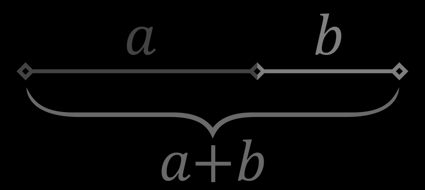
The role of the Golden Ratio in musical harmony
The Golden Ratio, often represented by the Greek letter Phi (Φ ≈ 1.618), is a mathematical proportion present in nature, from the spirals of galaxies to the structure of our DNA. Artists and architects have long used Phi as a guiding principle of beauty and balance, and its presence in music is both fascinating and enigmatic.
But while Phi's influence on musical structure and composition is well documented, its role in harmony and tuning is far more mysterious, even disturbing.
Unlike the simple whole number ratios that create the harmonious intervals we are used to, Phi, as a musical ratio, results in a surprisingly dissonant interval. Why does something so revered for its harmony in nature sound so harsh in music? And what can we learn from this paradox?
Phi and the mystery of the 0.618 interval
Musical harmony is based on simple ratios. The most consonant intervals, such as the octave (2:1) or the perfect fifth (3:2), arise because their frequencies vibrate in a simple and predictable way. These ratios create a strong resonance: our ears interpret them as "stable" and "pleasing" because they align with the physics of sound.
But what happens if we try to construct an interval using Phi?
If we take two frequencies in the golden ratio (1.618:1) and play them together, we get a musical interval of approximately 833 cents, which lies between a perfect fifth (700 cents) and a major sixth (900 cents). However, instead of sounding harmonically rich, this interval feels harsh, unstable, and even strange.
Its inverse, 0.618:1, is even more disturbing. This strange inharmonic interval doesn't fit neatly into the harmonic series or traditional tuning systems. Instead of producing clear consonances, it creates a complex web of interference patterns, giving it a tense, ambiguous, and unresolved feel.
But why?



Why does Phi sound so unstable in harmony?
1. The problem with non-integer proportions
The reason why Phi sounds dissonant lies in how our brain interprets harmonyWhole-number frequency ratios (such as 2:1, 3:2, or 5:4) create waveforms that reinforce each other, generating a sense of clarity and stability.
But Phi is an irrational number; it can't be expressed as a simple fraction. This means that sound waves in an interval based on Phi never completely align, resulting in an ever-changing inharmonic relationship between the two frequencies. Our ears perceive this as dissonance because it lacks the predictability we instinctively associate with pleasant sounds.
2. The ear's perception of combined tones
Another reason why Phi-based intervals sound harsh is due to blended tones, a phenomenon in which our ears generate additional "ghost" tones based on the sum and difference of the original frequencies.
For example, if we play two frequencies at 1000 Hz and 1618 Hz (an interval based on Phi), our ears will perceive additional tones at:
- Difference tone: 1618 - 1000 = 618 Hz
- Sum tone: 1000 + 1618 = 2618 Hz
Unlike traditional harmonies, where the combination of tones reinforces the root note, intervals based on Phi produce phantom tones that don't fit neatly into the harmonic series. This contributes to their harsh, inharmonic character.
3. The ever-changing nature of Phi
Another reason Phi creates tension in music is that it is never fully resolved.
In tonal music, we rely on tension and resolution: chords follow one another naturally, creating a pleasing sense of movement. But since Phi is an irrational ratio, it never "lands" at a predictable point.This gives Phi-based intervals a floating, unresolved quality, making them feel alien to the structured world of Western harmony.

How composers have used the Phi symbol in music
Despite its harmonic instability, the Phi symbol has fascinated musicians and composers throughout history, not only for its structure but also for its sound. Here's how:
1. Phi in formal composition
Many composers have used Fibonacci numbers and the golden ratio to structure their music. Some famous examples include:
- "La Mer" by Claude Debussy: The formal divisions of the piece align closely with the Fibonacci proportions.
- Compositions by Béla Bartók: Many of his pieces structure the length and dynamics of sentences according to Fibonacci numbers, creating an organic sense of fluidity.
- "L'escalier du diable" by György Ligeti: uses rhythmic structures derived from the Fibonacci sequence.
While these composers did not necessarily use the Phi symbol as a tuning system, they incorporated it as an architectural principle, shaping musical events with its natural balance.


2. Phi in harmony and tuning
More recently, experimental musicians and microtonal composers have explored Phi as an interval, harnessing its dissonance as a creative tool.
- "Stria" (1977) by John Chowning: uses frequency modulation synthesis with Phi-based tuning, producing inharmonic and otherworldly sounds.
- Sevish's microtonal music: Explores Phi-based intervals and alternative tuning systems in electronic music.
These composers don't try to force Phi's conventional harmony; instead, they take advantage of its strange, floating quality to create new textures and emotional effects.
Phi in Nature vs. Phi in Music: A Paradox?
So why does Phi create so much beauty in the visual arts and nature, but so much dissonance in music?
This paradox is what makes Phi in music so fascinating. In nature, Phi represents balance and organic growth; it's found in the proportions of seashells, flower petals, and even the human body. But in music, where we rely on harmonic reinforcement, Phi's irrational nature disrupts rather than unifies.
Instead of seeing it as a contradiction, we could see it as a duality:
In the visual arts and nature, Phi gives us harmony and proportion.
In music and sound, Phi gives us tension, dissonance and mystery.
Both are essential for artistic expression.
Final Thoughts: What Can We Learn from Phi in Music?
The Golden Ratio challenges our ideas about harmony. It reminds us that not all beauty is consonant, and that music is more than pleasing sounds: it's about contrast, tension, and exploration.
Phi teaches us to accept the imperfect, the unresolved, and the mysterious. It invites us to listen in new ways, to step outside the familiar world of perfect fifths and octaves, and to experience sound as a fluid, evolving form.
Perhaps Phi's true lesson in music is this: not everything has to be resolved. Some things are beautiful simply because they exist in tension.
And maybe, just maybe, that's where the magic happens.
